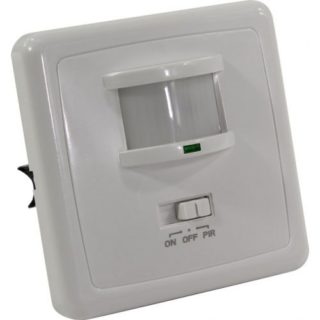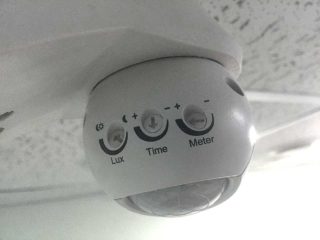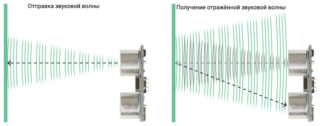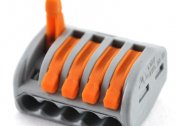Presence sensors to turn on the light - this is the most common option for providing automatic control of lighting in the house and on the territory. It is enough to connect a special device to the power supply circuit that feeds the lighting equipment, and if any moving object appears in the sensor’s field of action, it will immediately send a command to turn on the light in the desired area. The light turns off after a certain period of time when the object leaves the treated area of action or stops. The main function that any modern occupancy sensor has is to provide comfort.
Where to use DP
There are many purposes for which a presence detector can be used:
- turning on and off the light;
- monitoring the operation of the lighting system;
- adjustment of the state of different devices.
The most common use of such equipment is the modernization of the lighting system for residential apartments, houses and cottages. Sensors are installed where people are not very long and go there infrequently:
- cellar;
- pantry;
- bathroom;
- entrance;
- attic;
- restroom;
- the corridor.
Some people prefer to install such equipment in every room in their house, including also an additional sensor at the front door, which will turn on the light in front of it when it detects the return of the owner.
Presence sensors are widely used in office, educational and industrial institutions, where they are installed in halls, halls, fire exits and other facilities.
Types of presence sensors
Depending on how the sensor registers movement in its area of effect, it can be:
- infrared;
- microwave;
- combined;
- ultrasonic.
There are sensors that only perceive the radiation coming to them - they are usually called passive. If the sensor simultaneously receives and emits signals, it belongs to the category of active.
The equipment may be acoustic or sound. These devices send a signal to turn on the light if the noise level near them will exceed the set value.
There are various options for controlling occupancy sensors. In the market of modern devices, you can find those that allow the user to independently set indicators and change them at any time, including distance, sensitivity, and much more. At the same time, others set all the parameters completely automatically.
The last category of devices immediately sends a command to turn on the light after a moving object appears in the scope, and after its disappearance, a command to turn off the light is sent. In this case, it happens that a person moved around his territory, but then decided to sit down on a bench, and the sensor, which ceased to record movement in its coverage area, automatically sent a command to turn off the light. To exclude such unpleasant situations, the connection diagram is supplemented by a conventional switch, with which you can force the lamps to light.
Depending on the installation location, the sensors can be internal or external. Both of these categories practically do not have any noticeable structural differences, except that the sensors installed on the street are additionally equipped with a powerful case that protects them from the effects of various harmful factors.
The more popular are embedded devices that are installed in a wall or ceiling, but there is also a more economical option for acquiring surface-mounted sensors that will be constantly visible.
Extra options
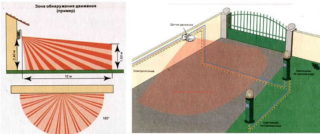
There are also several additional parameters that distinguish modern occupancy sensors:
- Range of work. Depending on the features of the device, it can be triggered when motion is detected at a distance of 23 meters or more. Most often, such a large working radius is needed for outdoor devices or houses with long corridors. In small rooms, it is quite enough to use equipment with a working radius of not more than 10 meters.
- Power load. The range of this indicator is simply huge - from 7 to 2,400 watts. Choosing this or that option, for a start it is worth calculating the lighting power that will be connected to the sensor. If you plan to gradually connect new equipment over time, add a new sensor or an intermediate relay to the circuit. It also happens that the total power of devices connected to the sensor significantly exceeds the calculated power. Because of this, the device relays break. In such a situation, the only right decision would be a complete replacement of the equipment.
- Type of load. It all depends on what kind of lamps are used in the lighting system of an apartment or house: halogen, fluorescent, LED or ordinary incandescent lamps.
- Angle of visibility. This parameter depends solely on the installation location of the device. If it detects movement in the corridor, a large angle of operation is unnecessary. If you plan to put the sensor somewhere on the street in the middle of the yard, it is best to buy a device with a large coverage.
Any outdoor occupancy sensor should be equipped with effective protection against external factors such as moisture, temperature changes or dust. If the device is installed in a residential or office building, it does not need a high degree of protection.
Customization Features
Sensors are adjusted for the timely inclusion of light through special potentiometers, the characteristics of which change at the bottom of the housing. Often, the user can independently set the on time, change the standard degree of sensitivity, and also adjust the signal to turn on the light. According to the last parameter, most often the characteristics are set so that the device only works after dark, since the operation of the lamps in the daytime is meaningless.
The sensitivity of the sensor is changed so that the device works accurately, turning on the light always at the right time, without showing false positives. The greater the sensitivity of the installed sensor, the more often it will detect movement in its field of effect. The main task when setting up is to achieve such an effect that it only reacts to people, excluding the inclusion of light when moving any animals, insects, etc.
By adjusting the time, it is possible to ensure that the device does not turn off the light automatically 15 seconds after it turns on. Often this indicator changes by 2-15 minutes depending on how much time an average person spends at the place of installation of the sensor.
How sensors work
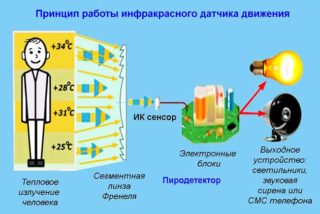 Depending on the type of sensor in question, the features of the equipment will also change. Each model has its pros and cons. To minimize the disadvantages, many prefer to use the combined option.
Depending on the type of sensor in question, the features of the equipment will also change. Each model has its pros and cons. To minimize the disadvantages, many prefer to use the combined option.
Infrared
The design of such equipment includes a pyroelectric unit, as well as a lens that includes several small lenses, as well as special electronic components.The sensor is triggered immediately after the infrared wave disappears on the photocell, if a person became the source of this interference.
Microwave and ultrasound
Such devices operate using a special high-frequency radiation generator and receiver. In most cases, they can be found as a separate element of the security system. Some people prefer to use them when arranging lighting. The sensor constantly emits signals. If they return with a different frequency, it determines the cause of the interference and is triggered if it records the movement of a person.
Noisy
Such equipment is triggered after some unusual sounds are recorded near it: claps, steps, conversations. An ordinary microphone is used as a signal receiver, the sensitivity of which can be adjusted by the user himself.
Thanks to the use of presence sensors, it is possible to significantly reduce the cost of the lighting system, since it will not constantly spend electricity and will last longer. Therefore, modern sensors are perceived not only as an option to make your life more convenient, but also as an effective means of saving.

